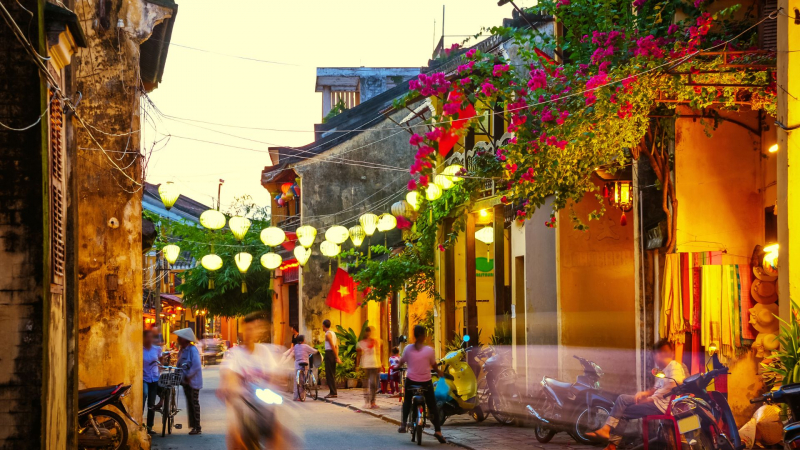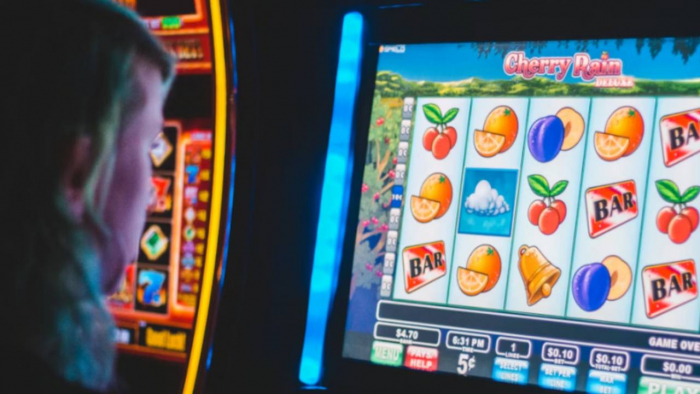Vietnam is a wonderful fusion of chaos, color, and culture. And its bustling street markets are where it is most evident. These vibrant markets, which stretch from north to south, provide a wide range of goods, including delicious street food, handcrafted goods, clothing, antiques, and memorable souvenirs. Street shopping in Vietnam is truly a journey into the country’s heart and soul.
Best Places for Street Shopping in Vietnam
Each major city in Vietnam offers its own unique street shopping experience. Hanoi, the capital city, blends traditional charm with a dash of modern hustle. The Old Quarter is a must-visit place, packed with narrow streets full of items like lacquerware, hand-embroidered textiles, and silver jewelry. Dong Xuan Market, which is Hanoi’s largest indoor market, offers everything from clothing to electronics.
Ho Chi Minh City brings a more energetic pace. Ben Thanh Market is a shopper’s favorite, especially for textiles, spices, and local snacks. For a less touristy experience, Binh Tay Market in District 5 offers affordable prices and a more authentic experience. Hoi An, though smaller, is a gem for custom tailoring. Numerous boutiques and tailors provide made-to-measure clothes within 24 hours.
What to Buy: Unique Finds in Vietnamese Markets
Vietnam's street markets are treasure troves. Shoppers often find handmade silk scarves, conical hats, and other goods made of bamboo. Home decor items include traditional paintings, lacquer paintings, and carved wooden figures. Local ceramics, made in Bat Trang village, are also in style for their stunning patterns and affordable prices.

Another gem is clothing. Locally produced dresses, T-shirts with offbeat prints, and fabric that can be tailored are sold by most vendors. For those who enjoy bringing back trinkets with a cultural twist, there are propaganda posters, vintage coins, and stamps to be found. Food enthusiasts can buy coffee, dried fruit, and local snacks as delicious take-home souvenirs.
Tips on Bargaining: Mastering the Negotiation Art
Bargaining is expected at Vietnamese street markets. Prices are not usually fixed, and shoppers can get a better price with some politeness and persistence. It is advisable to begin by offering half of the original price and then negotiating toward a middle ground. Vendors expect this and may even relish the bargaining process.
Maintaining a friendly demeanor works well. A smile and respectful tone smooth out the encounter. Walking away can also be a helpful strategy. Many times, the vendor will invite the shopper to return with a better price. Learning some Vietnamese words also facilitates rapport building and increases the chances of a discount.
Best Times to Visit Street Markets
Timing matters when shopping in Vietnam’s open-air markets. Morning hours, especially between 7 AM and 10 AM, are great for fresh produce and fewer crowds. Evening markets, such as the ones in Da Nang or Hanoi’s weekend night market, offer a completely different vibe. The air cools down, the lights flicker, and the stalls come alive with music and energy.
Midday tends to be hotter and more chaotic, especially in larger cities. Vendors might be less inclined to haggle during peak heat, and the experience can be draining. Early evening is often ideal, with more relaxed shopping conditions and better chances of finding street food to refuel during the hunt for bargains.
Cash, Cards, and Connectivity
Most street vendors prefer cash, especially in smaller markets. Carrying small denominations of the Vietnamese dong helps make transactions smoother. ATMs are available in major cities, but not always near every market. While some high-end stalls may accept cards, relying on cash is safer.
For travelers staying connected during their trip, using a Vietnam travel eSIM provides easy access to maps, translation apps, and payment platforms. This can help navigate unfamiliar areas and even look up price comparisons or reviews while shopping. Whether hunting for the best tailoring service or locating a market entrance, a stable internet connection makes a difference.
Using Technology to Enhance the Shopping Experience
While traditional markets remain rooted in culture, modern tools can make the experience smoother. Apps can help with language translation, street navigation, and even currency conversion. A Vietnam travel eSIM ensures reliable access to such tools without needing to rely on public WiFi.
Being connected helps travelers to find less crowded markets, check opening times, and learn more about unfamiliar goods. It can also help in case of emergencies or if directions are needed in real-time. This convenience doesn’t replace the charm of wandering through a market but complements it well.
Street shopping in Vietnam is more than a way to pick up souvenirs. It is a cultural immersion, a sensory adventure, and an exciting way to support local artisans and vendors. Each market has its vibe and flavor, and the best experiences often come from taking the time to explore without a fixed plan. From handmade crafts to street food, Vietnam’s markets are worth getting lost in. Having tools like a Vietnam travel eSIM makes it easier to focus on the experience rather than logistics. With a little patience, a few Vietnamese phrases, and the right mindset, shopping becomes an unforgettable part of any visit.
Post Comment
Be the first to post comment!





